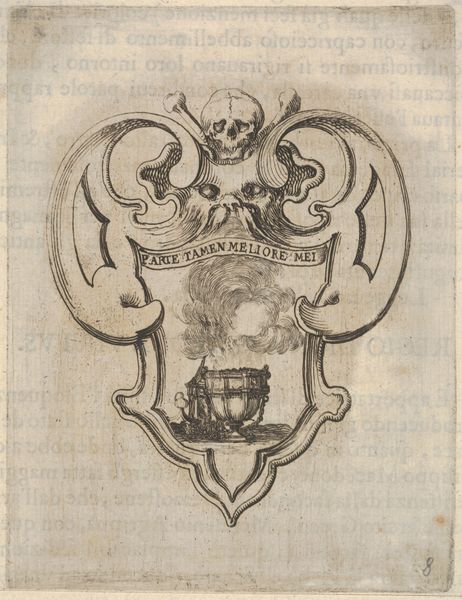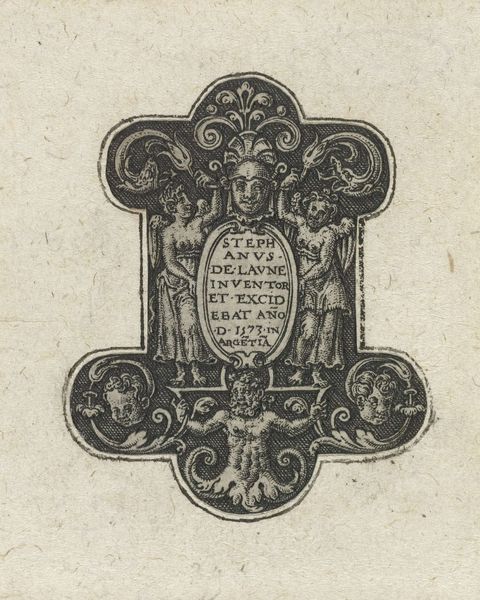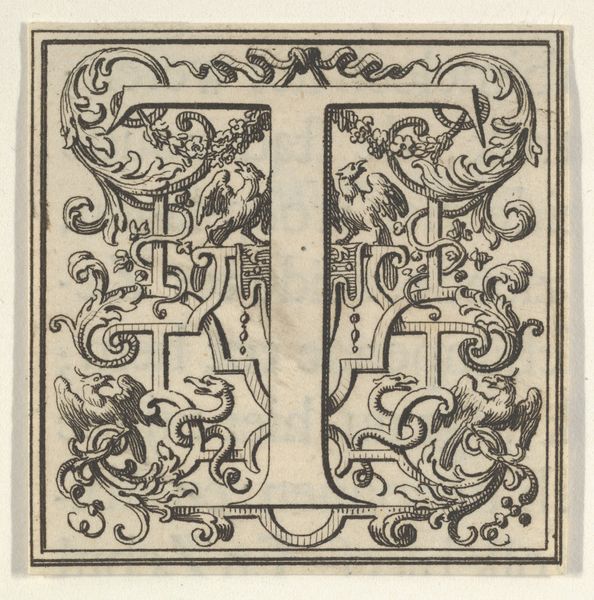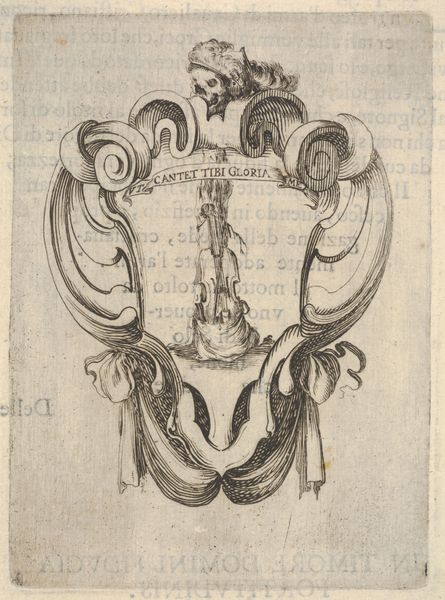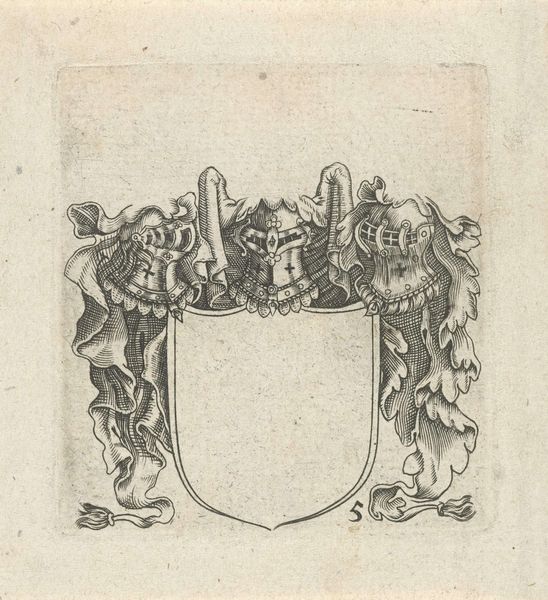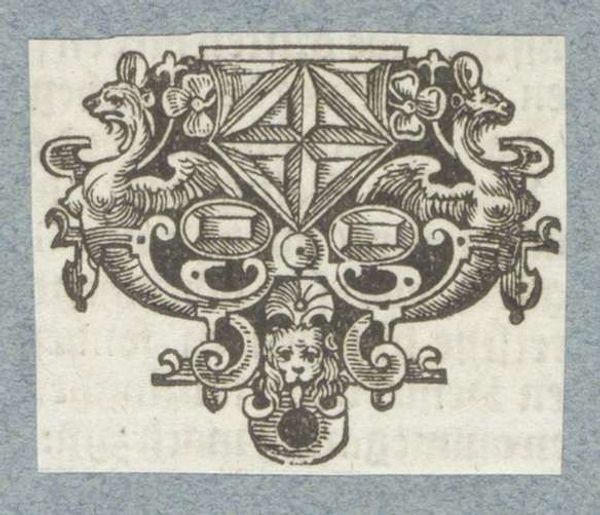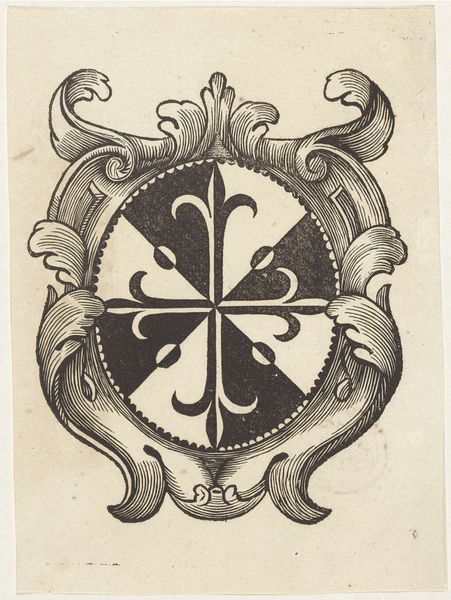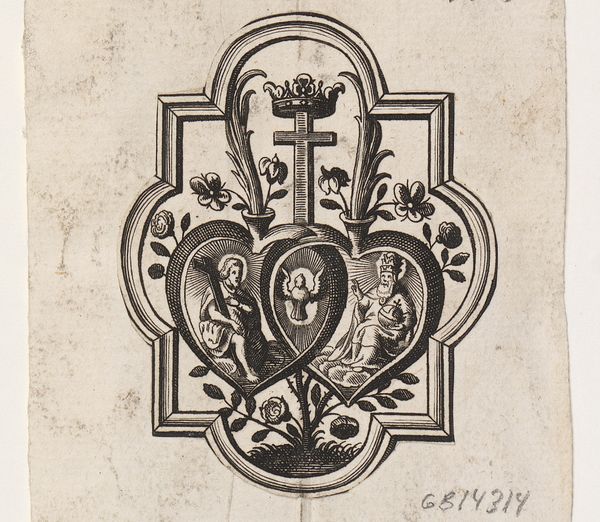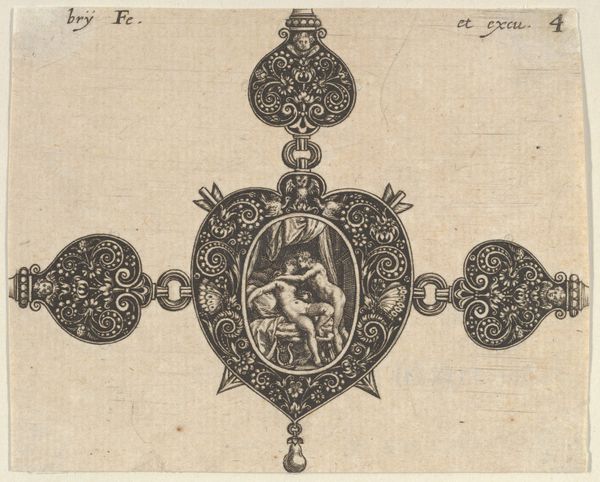
A cartouche with a wreath of laurel and palms, a skull and crossbones at top, from 'Eight Emblems for the Funeral of Francesco de Medici' (Huit emblèmes pour les funérailles du prince François de Médicis) 1640 - 1660
0:00
0:00
drawing, print, engraving
#
drawing
#
allegory
# print
#
11_renaissance
#
momento-mori
#
engraving
Dimensions: sheet: 6 1/2 x 5 1/8 in. (16.5 x 13 cm) mount: 8 3/8 x 6 7/8 in. (21.2 x 17.4 cm)
Copyright: Public Domain
Curator: Look at the Stefano della Bella engraving, made sometime between 1640 and 1660. It is titled "A cartouche with a wreath of laurel and palms, a skull and crossbones at top, from 'Eight Emblems for the Funeral of Francesco de Medici'". Editor: Oh, a memento mori. Somber. The stark lines of the engraving style seem perfect for the theme, don't you think? It sets a rather dramatic, albeit restrained, mood. Curator: It does, and knowing this piece comes from a series commissioned for a funeral reveals something about early modern attitudes toward death. The combination of drawing and engraving allows for intricate details, yet lends itself to mass production as part of a commemorative print series. Editor: Exactly. Skulls and crossbones speak universally about mortality, a very obvious, albeit pointed, reminder of the ephemeral nature of human existence, in any cultural lexicon. But those palms and laurel wreaths... Are they symbols of victory even in death? A triumph of the soul? Curator: Quite possibly. Or consider the laurel as it pertains to craft. Perhaps they allude to the creative production Medici supported during his lifetime. What strikes me is the material aspect—the labor invested in this detailed copperplate engraving, which exists as both a tribute to the patron and an artifact made possible by the Medici’s wealth. The production and circulation speak to the power dynamics of the time. Editor: I am more drawn to that cartouche—a shield meant to elevate or distinguish the family name or signify deeds done by the person. But instead, Della Bella surrounds it with death. The tension between those two symbols seems important here; he challenges us to contemplate what is really of value in human life. Curator: Good point, that interplay gives us so much to consider regarding values. Looking at how widely prints were distributed at the time versus exclusive artistic patronage, it feels more accessible to a wider consumer base through reproducible engravings that reflect wealth as well as death's great leveling. Editor: Ultimately, death equalizes all things; engraver, subject, and the print’s owner—perhaps even reminding us, today, across centuries, that we are, at most, temporary. Curator: An equalizing symbol captured through unequal modes of production! A paradox indeed. Thanks, this makes me consider all the layers inherent in even what appears to be a simple piece.
Comments
No comments
Be the first to comment and join the conversation on the ultimate creative platform.
